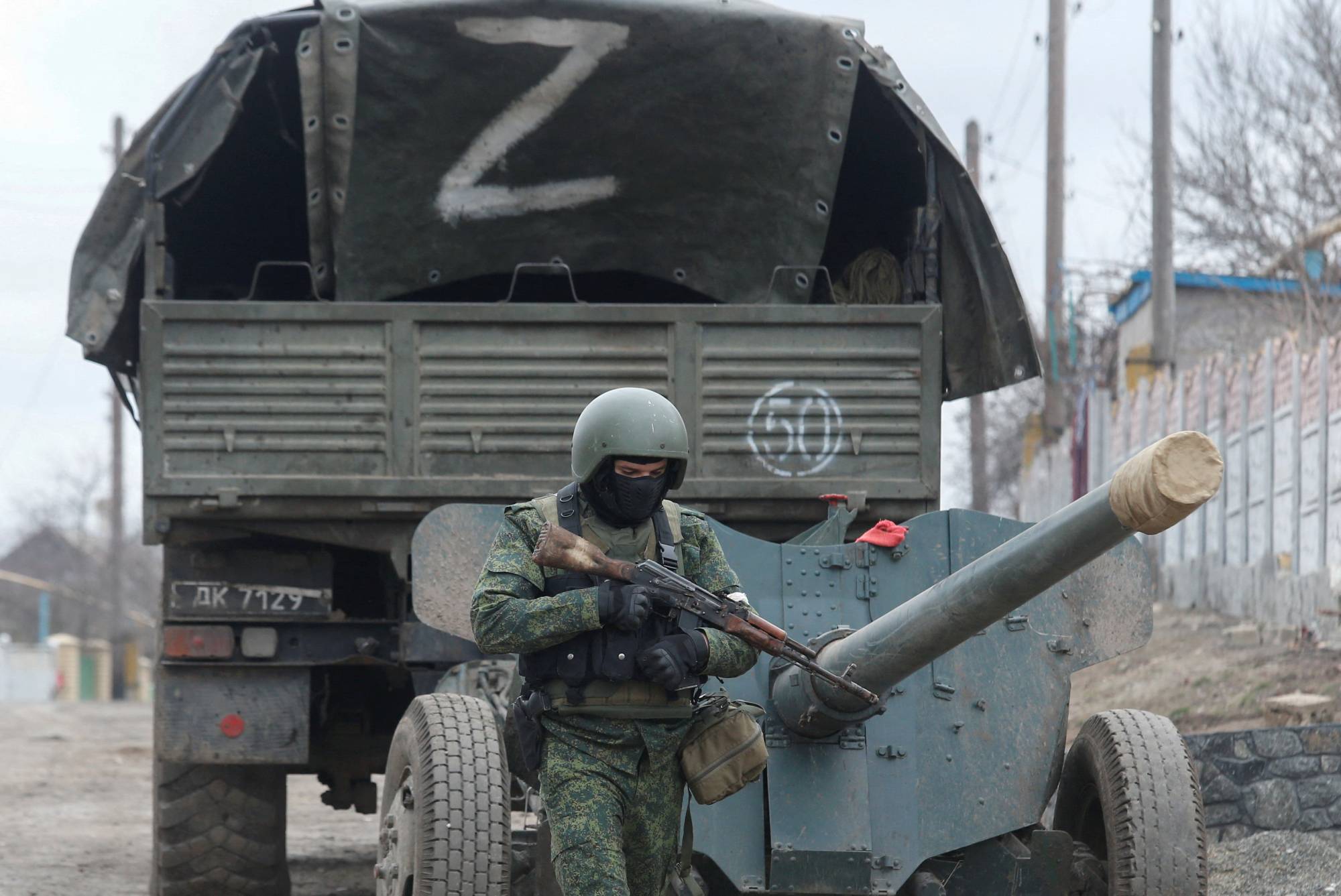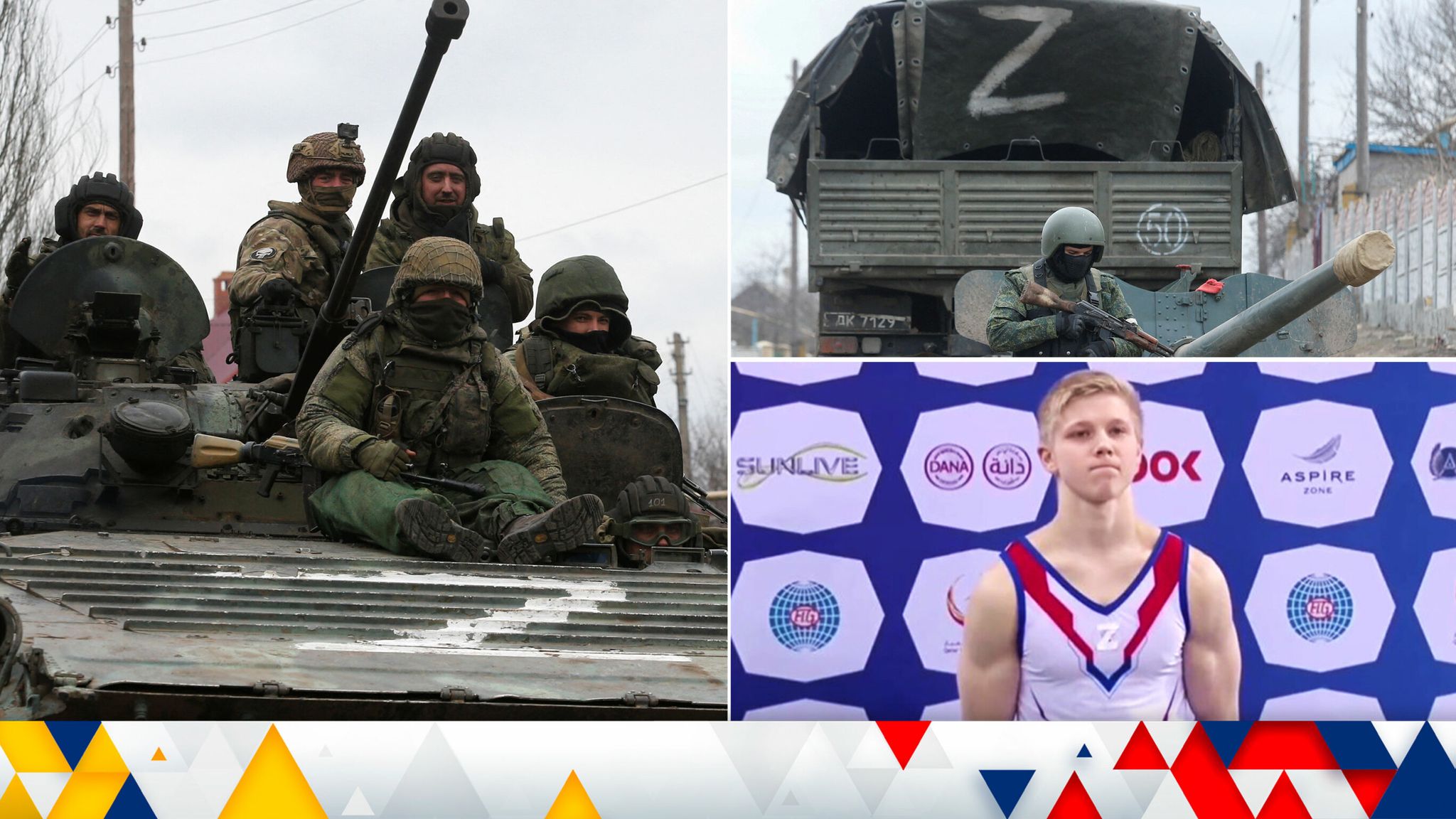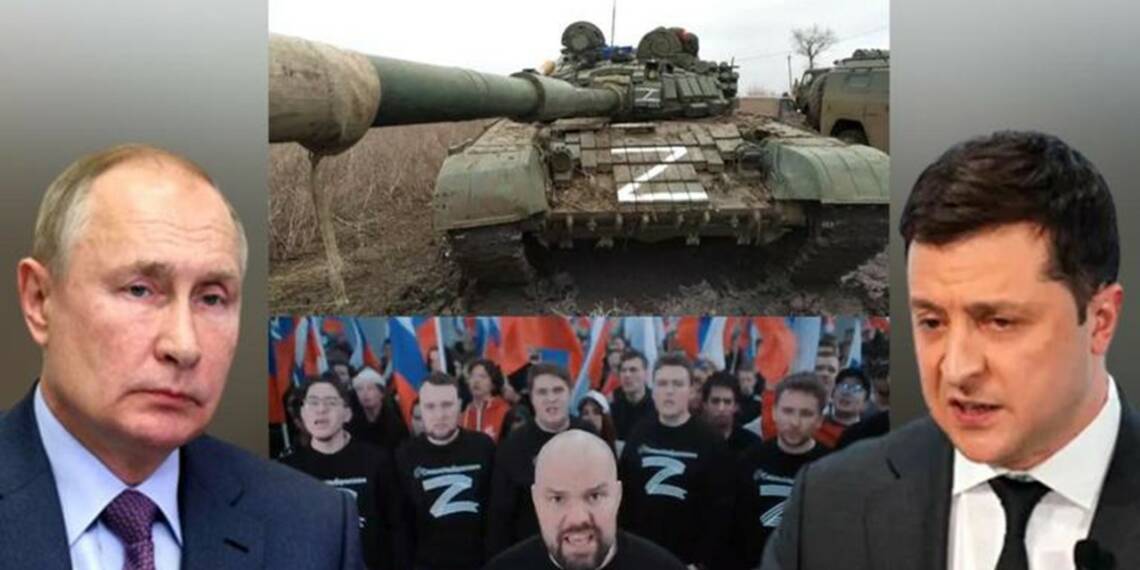First seen on Russian tanks and other military vehicles, the “Z” emblem has gained popularity among some as a sign of support for Russia’s invasion of Ukraine. When Russia invaded Ukraine, messages using the letter “Z” were frequently circulated on social media. The letter has recently appeared on billboards in Russian cities. Cars and commercial vehicles now have stickers of the letter ‘Z’. In an apparent support of the escalating war, state-owned RT in Russia is offering T-shirts with the same letter ’z’, for sale on its website.
Origins of Letter Z:
Open source analysts and military experts first spotted the mysterious Z-shaped letter hand-painted on Russian tanks and military trucks massed on the Ukrainian border, leading to widespread speculation among western experts as to what the letter meant.
As Russia’s invasion began, more military hardware was spotted emblazoned with Zs, as well as other letters, including O, X, A and V. The letters seen on the hardware were usually framed by squares, triangles, and other painted shapes. As a letter, Z does not exist in the Cyrillic Russian alphabet; rather, a letter resembling the figure 3 represents the “z” sound.
Some say it is Z for За победу – pronounced “za pobedu” (meaning “for the victory”), others say it is for “Zapad” (West)
Many have noted its similarity to the swastika – the symbol used by Nazi Germany in the Second World War – nicknaming it “Putin’s swastika”. Others believe the letters were drawn in an attempt to avoid friendly fire, while some pro-Kremlin Russian military experts have speculated that the letter Z stands for the name of Ukrainian President Volodymyr Zelensky, and the letter V for Vladimir Putin.

The Russian defence ministry appears to have confirmed the first option. In an Instagram post, it posted three pictures of Russian soldiers – today’s soldiers juxtaposed with what appeared to be Soviet soldiers from the war era – with the “Z” super-imposed, along with the Russian За победу – “for the victory”.
It was also thought that the Letter “Z” is a way for Russia’s military to identify its own forces – a way of preventing incidents such as friendly fire. It may be that this was the initial purpose but, as the symbol became more widely seen and adopted by war supporters, the military’s PR arm decided to get in on the act.
Read More: Woaah! Biden’s son Hunter is helping Russia in the Ukraine war
A show of support for Russian invasion:
The letter Z has evolved from a military emblem to the primary representation of public support for Russia’s invasion of Ukraine.
Three days after the invasion, the state-funded television outlet RT, which receives funding from the Kremlin, announced on its social media accounts that it was selling Z gear, like T-shirts and hoodies, to demonstrate support for Russian forces. Since then, officials have organised a plethora of flash mobs across the nation in which young Russians are seen supporting the war while sporting Z shirts. In addition to being written on street advertisements, the Z letter has also been painted on sizeable number residential buildings from the Soviet era.
A number of schools have also posted images of children standing in a Z formation. One image that has been circulating online since showed terminally ill children from a hospice in the southern city of Kazan forming a Z to support the invasion of Ukraine. Officials eager to show their support for the war have even pledged to include the letter in the names of their region. Sergei Tsivilev, head of the Kemerovo region, announced that he had decided to rename the region and add the letter Z to the region, which might now be listed as KuZbass.
The symbol has also had some limited exposure outside Russia. thousands of Serbs waving Russian flags and carrying Z letters marched through Belgrade to the Russian embassy in a show of public support for Moscow after its invasion of Ukraine. And Russian gymnast Ivan Kuliak will be investigated by the sport’s governing body after he wore the symbol on the podium after finishing third in the parallel bars at a competition in Qatar over the weekend. His Ukrainian rival Illia Kovtun, who won the gold medal, did not look impressed.

Reactions by Russian Society:
Russia has a history of promoting certain signs and symbols to gather support for its military. During the country’s annexation of Crimea, Russia heavily promoted the use of the orange- and black-striped ribbons of Saint George. The ribbon now enjoys wide popularity in Russia as a way to show public support for the Russian government and the military. Some Russians, however, have ridiculed Z. During Sunday’s countrywide rallies against Putin’s invasion of Ukraine, some protesters were seen holding signs with the word Zachem (For what?). Russians have also taken to the internet to post various memes satirising Z. In one, Harry Potter is seen showing Ron his lightning-shaped scar, which has been modified to show the letter Z.
Read More: Austria regrets conflict with Russia
Sign of Resistance for Ukraine:
It has come to light that pro-Ukrainian activists in the temporarily occupied Crimea are transforming Russian military symbols—the letter Z—into sand clocks that were previously painted in colours of the Ukrainian flag. This is happening as the war between Russia and Ukraine enters its second year and Russian troops are persistent in their furtherance of invading Ukrainian territory while war-ravaged Ukraine shows inertia
According to Pravda, the campaign named Nablyzhaietsia chas svobody [The time of freedom is approaching] was launched by the Crimean branch of the Yellow Ribbon resistance movement. Ukranian activists are redrawing the Z symbol, which the Russians leave on the streets of occupied cities and villages, and turning it into blue and yellow sand clocks. By drawing sand clocks, the activists are trying to convey the message that Russian attackers are left with very little time.
Military vehicles frequently include markings to assist soldiers and their commanders in organising themselves during the chaos of combat; one of the most well-known marks is the red cross or red crescent to distinguish medical trucks. Regardless of its initial military connotation, “Z” has come to stand for domestic and international support of Russia’s ongoing conflict in Ukraine.








